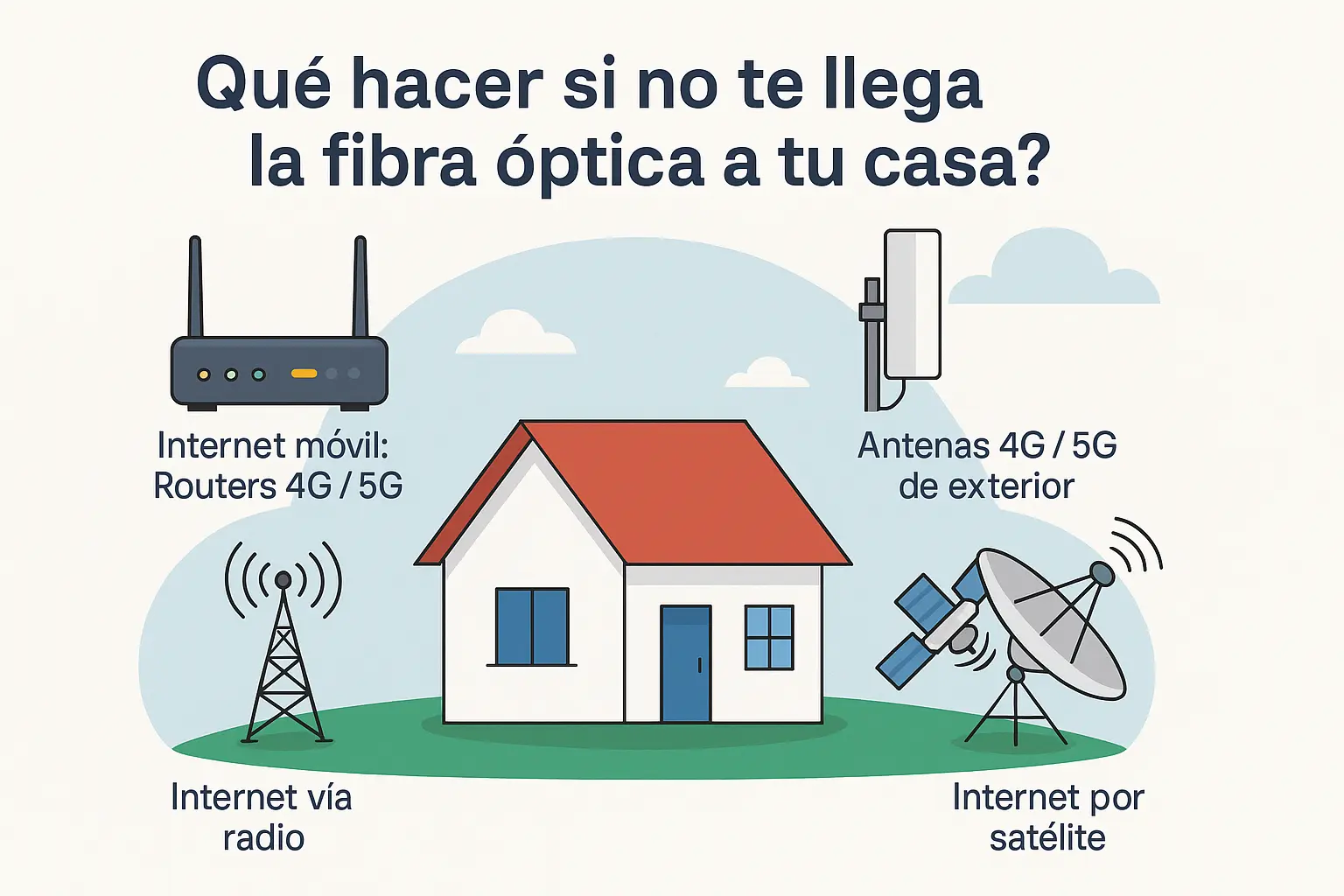What to do if you can't get fibre optics to your home?
If you can't get fibre to your home or business, you're not alone. Many rural areas, remote housing estates or homes in the countryside still face this limitation. Fortunately, today there are several alternatives to connect to the Internet without relying on fibre. From mobile solutions such as routers or 4G/5G antennas, to more stable technologies such as wireless internet or satellite internet, in this article we explain what options are available and which may be the most suitable for you.
Mobile Internet: 4G / 5G Routers
One of the fastest and easiest solutions to get Internet in areas without fibre optic coverage is to use a 4G or 5G router. These devices work in a similar way to a conventional router, but instead of connecting to a fibre or ADSL network, they use a SIM card to access the mobile data network (4G or 5G).
Simply insert the SIM card into the router, place it in a location with good mobile coverage (near a window, for example) and connect your devices via Wi-Fi or network cable. This is a popular option for rental properties, second homes or areas where a fixed installation is not wanted or not possible.
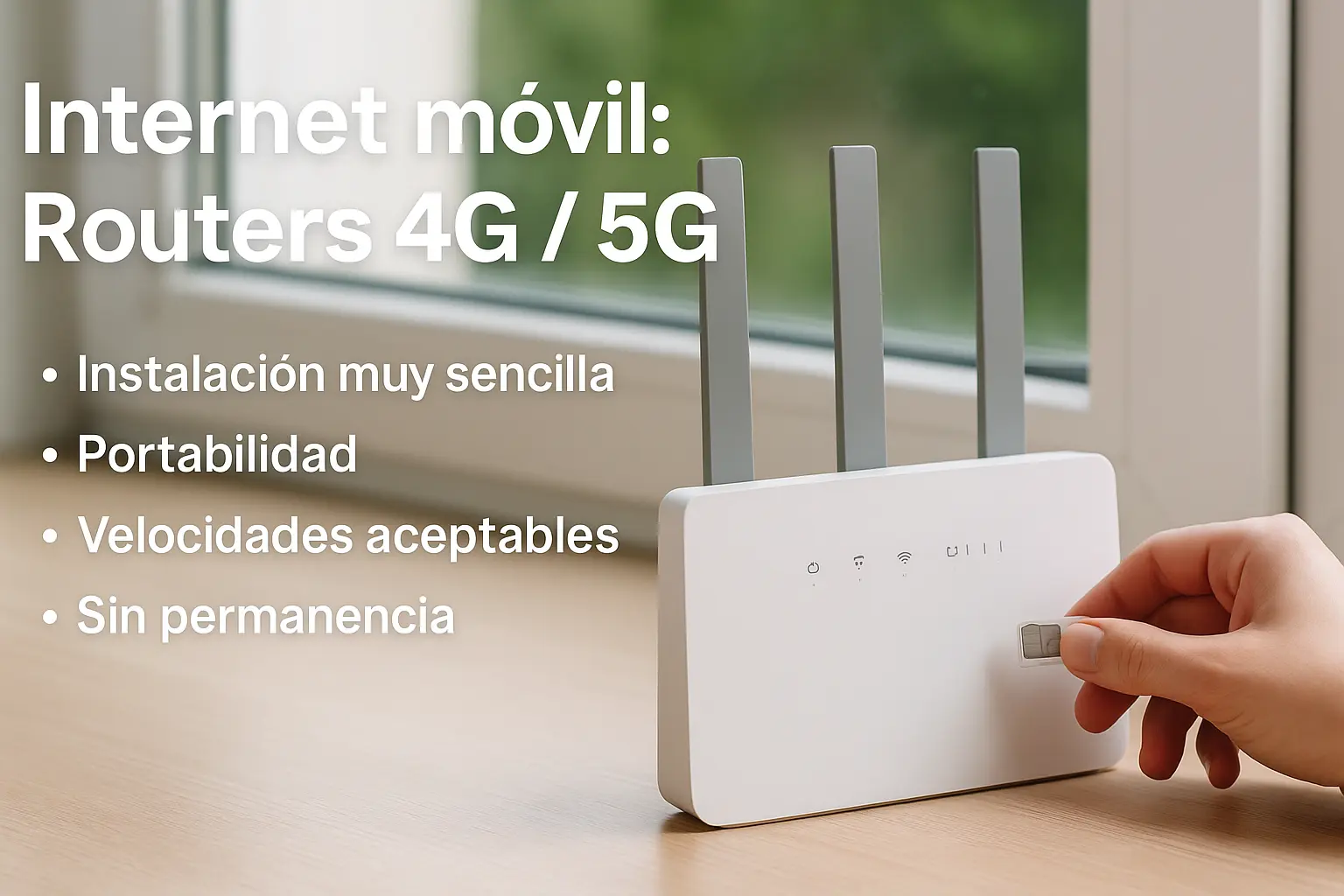
Pros
- Very easy installation. No building work or technicians, just plug and play.
- Portability. You can take it to another home or even on a trip.
- Acceptable speeds. With good coverage, 20-100 Mbps is easily achieved on 4G, and more with 5G.
- No commitment to stay. Many mobile tariffs have no commitment to stay.
Cons
- Variable coverage. Depends a lot on the signal in your area and mobile network saturation.
- Data capping. Some tariffs offer limited data or speed restrictions after a certain usage.
- Higher latency. Not the best choice for online gaming or latency-sensitive applications.
- Stability. Less stable than a fixed connection, especially if coverage is not optimal.
Estimated costs
- Router 4G/5G. Between 80 and 200 € (depending on model and features). For example, it is not the same if it is 4G than 5G, or if it has multi-SIM capability for combining several lines.
- Mobile tariff. From 20-30 €/month in unlimited or high data plans with 5G coverage.
Digitel has been offering this solution to our customers for many years with fantastic results Ask about our 4G/5G router service
I am interestedOutdoor 4G / 5G antennas
This option is the natural evolution of the first one, when there is not even good mobile coverage to install a 4G or 5G router. Whether inside a house or premises, in an industrial area or in open areas, it is possible to use a 4G / 5G outdoor antenna.
These antennas are placed on the facade, the roof or on a mast, at the point where there is coverage (even if it is weak). They are connected by cable to the 4G or 5G router inside. Thus, the router receives a much stronger and more stable signal, allowing you to surf with good speed even in areas where there would normally be no connection.
The concept is simple: an outdoor antenna has a higher gain. This means that it is able to receive the weak signal coming from the mobile phone antenna (usually several kilometres away), amplify it, and transmit it to the router via cable.
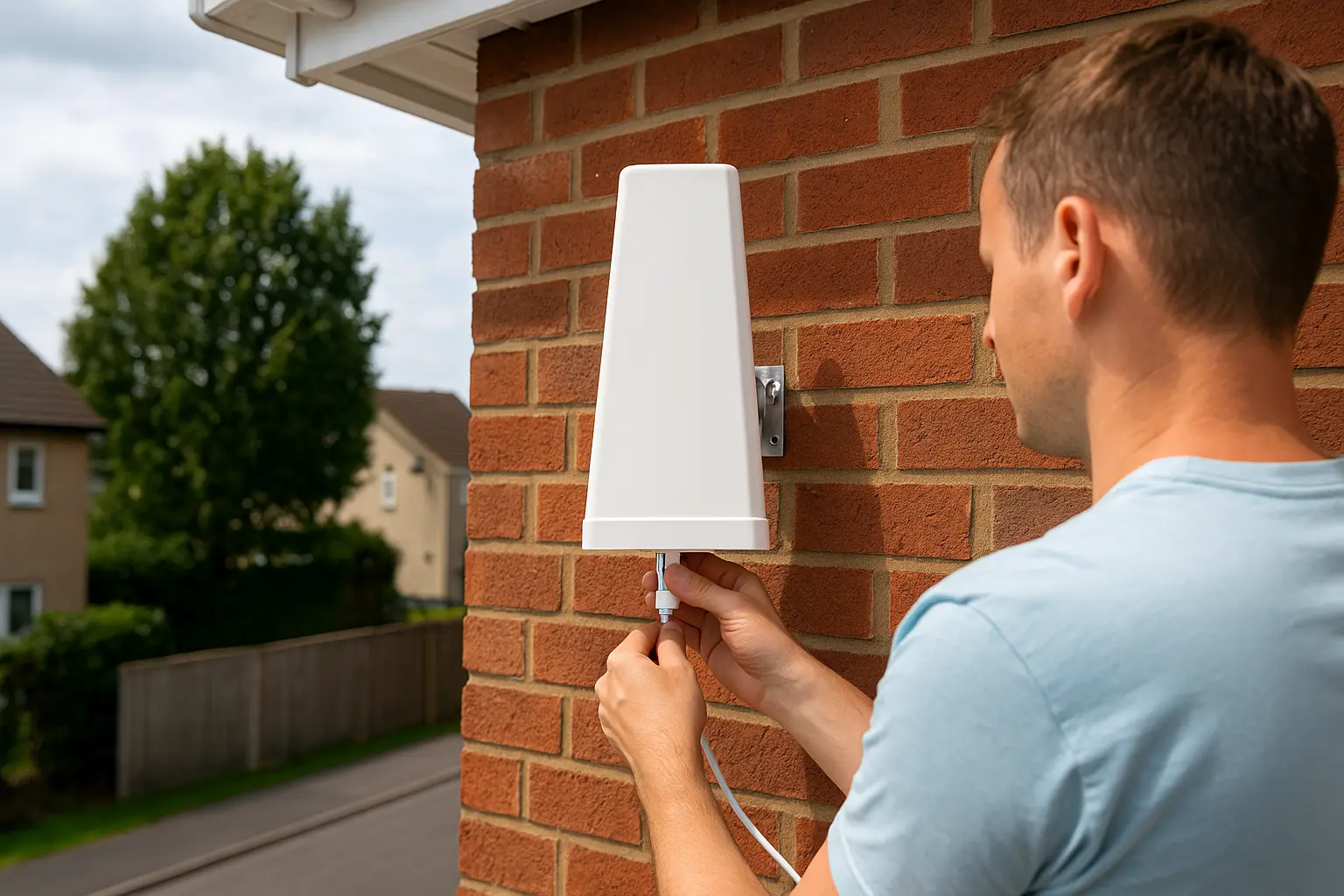
There are basically two types of antennas:
- Directional (panel or Yagi type): they are oriented towards the nearest telephone antenna. They are the most effective when the signal is weak, although they depend very much on the antenna being well aimed, and on there being a good line of sight between the transmitting tower and the receiving antennas.
They typically offer gains of between +8 dBi and +20 dBi. - Omnidirectional: receive signal 360° and are not limited to a single transmitting tower. They are used when the location of the telephone antenna is not well known or if the user needs to move in the area (e.g. camping areas, mobile events, boats...).
More moderate gain, between +5 dBi and +10 dBi, but more versatile
When is it recommended?
- In homes where the indoor mobile signal is poor or non-existent.
- To provide signal in outdoor areas: gardens, terraces, farms, camping sites, boats, etc.
- Industrial buildings or metal warehouses where the signal does not penetrate.
- To improve connection stability in rural areas.
- When you want to optimise speed and latency in 4G/5G connections.
Pros
- Noticeable improvement in signal quality and speed.Fairly inexpensive and quick to install solution.
- Compatible with most 4G/5G routers on the market.Allows multiple devices to be connected indoors.
Cons
- Requires outdoor installation.May require bracket or mast.
- Orientation on directional antennas.Must be oriented well for best performance.
- Dependence on network quality.If there is no signal at all outside, it will not work.
- Long cabling.May require long cable if the distance to the router is large (cable loss must be taken care of).
Estimated costs
- Outdoor high gain antenna.Between 50 and 400 €, depending on type (directional or omnidirectional) and quality.
- Installation.From 100 € approx., depending on location, difficulty and height.
- Compatible router.Between 80-200 €.
If you want Digitel to get a signal where there is none, just contact us and we will connect you wherever you are.
I want to be connectedInternet via Radio (AFR, AirFiber, WIMAX...)
The Internet via radio is one of the best alternatives when there is no fibre optic coverage and you do not want to rely on the mobile network.
This technology uses a system of fixed antennas that transmit the Internet signal from a provider to your home or business, via high capacity wireless links.
Unlike mobile connections (which rely on the telephone network), wireless Internet creates a dedicated link between the receiving antenna in your home and the carrier's base station, providing greater stability and better latency.
How Internet via radio works
The provider installs a broadband receiving antenna (usually on the facade or roof), facing the nearest transmitting station.
That antenna receives the Internet signal directly, via microwave or radio frequency, in specific frequency bands (depending on technology: AFR, AirFiber, WIMAX…).
Unlike mobile connections (which rely on the telephone network), radio Internet creates a dedicated point-to-point link between the receiving antenna and the base station.
Whereas 4G/5G shares antenna capacity with everyone in the area (which can lead to saturation at peak times), Internet over the air reserves a specific channel just for your connection.
This provides greater stability, better latency and more consistent speeds throughout the day.
The signal picked up by the antenna is transmitted via an Ethernet cable to the indoor router, which distributes the connection to all devices in the home or business.
Coverage and requirements
- You need to have line of sight or good partial visibility to an operator's base station.
- Coverage depends on the provider's own network, so it is important to contract with companies such as Digitel which works with coverage from the best wireless Internet operators in your area.
- In rural or hard-to-reach areas, this is often the best or only option for quality Internet.
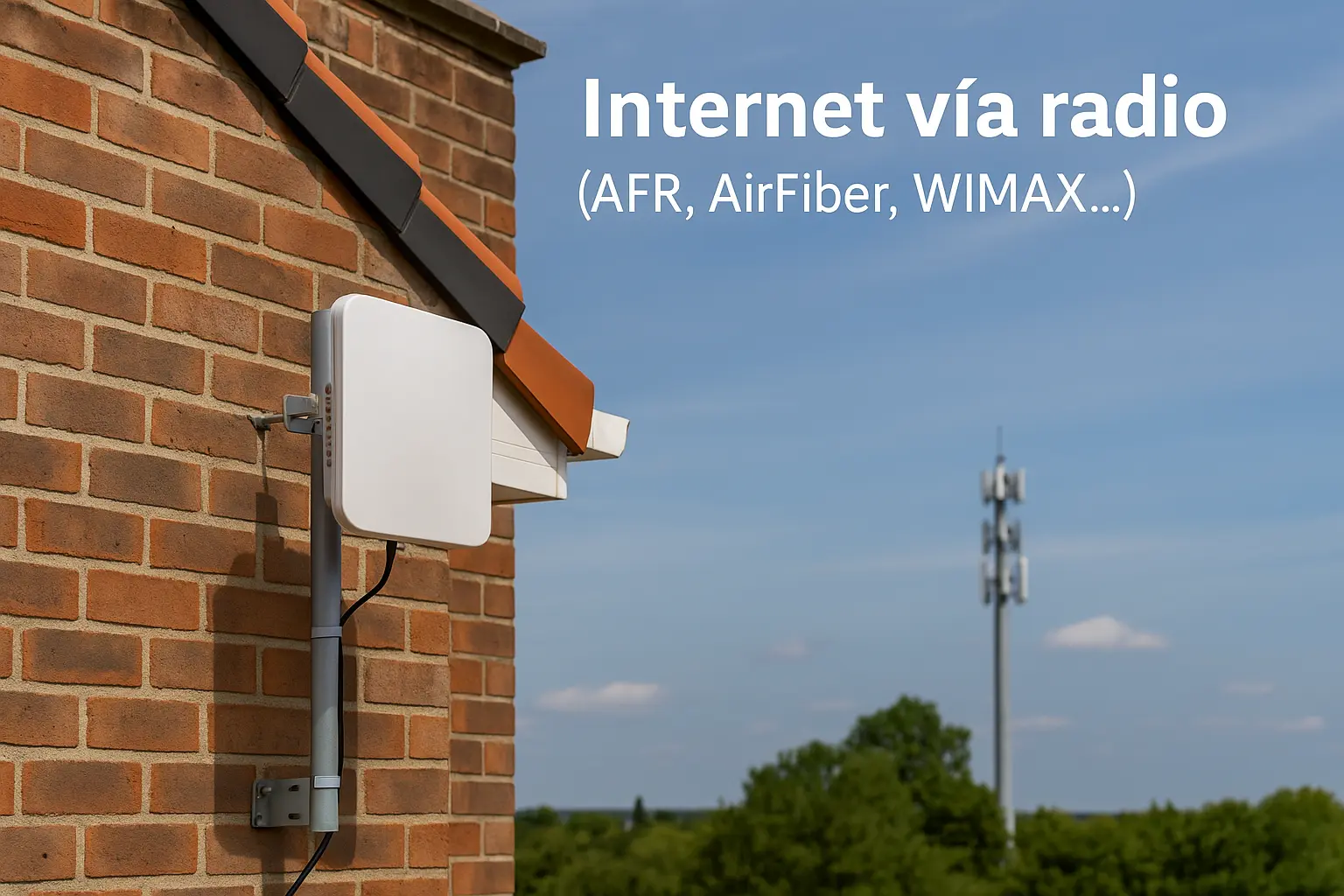
Pros
- Good stabilityAllows perfect browsing, teleworking, and HD video playback.
- Low latencyAround 10-25 ms, better than mobile or satellite solutions
- Competitive speedsDepending on provider, from 20-40 Mbps to 100 Mbps or more.
- Mobile network independenceNot dependent on the mobile network or saturations in the telephony bands.
Cons
- Outdoor installationRequires outdoor antenna installation.
- Limited availabilityNot available in all areas: need to confirm coverage.
- Initial costInitial installation cost higher than a mobile router.
- WeatherSlightly affected by adverse weather conditions.
Estimated costs
- Service registration + antenna installationBetween 150 and 200 €, depending on area and difficulty
- Monthly feeFrom 50 €/month, depending on the contracted speed, technology and type of service (residential or professional).
For more details and to check coverage in your area, you can consult our page dedicated to the service Internet via Digitel radio.
Install internet radioInternet via satellite
The Internet via satellite is a solution available in practically any part of the territory, however remote or isolated it may be. Unlike other technologies, it does not rely on a terrestrial network, but is connected directly to a geostationary or low-orbiting satellite that transmits the signal from space.
This technology has become especially popular in rural areas without sufficient fibre infrastructure or mobile coverage. In addition, the arrival of new providers, such as Starlink, offers better performance than traditional satellite options.
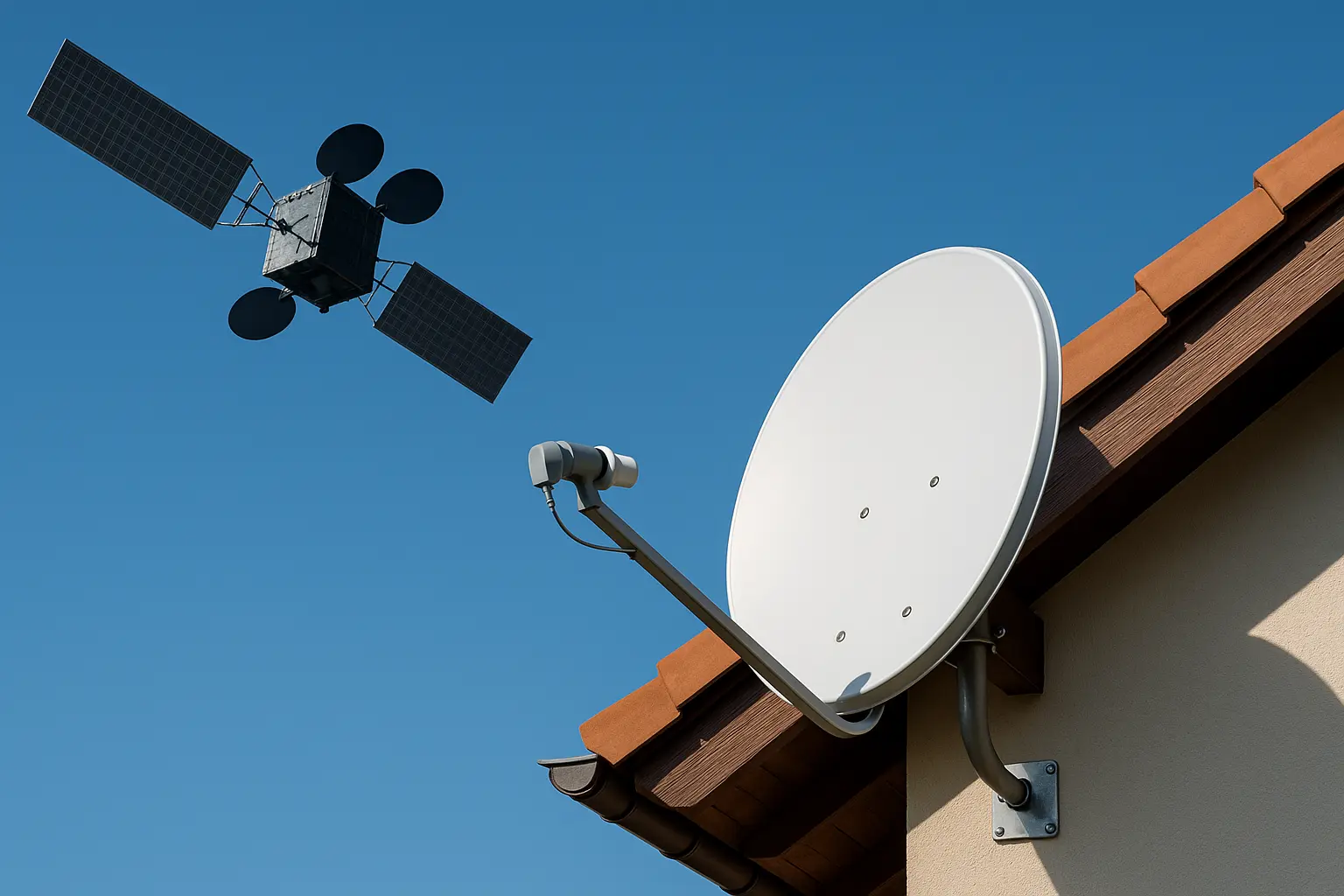
How satellite Internet works
A satellite dish is installed on the outside of the house (usually on the roof or facade), which is oriented to the assigned satellite.
The signal travels from your home to the satellite (over 30,000 km for geostationary satellites, or 500-1,200 km for low orbit satellites such as Starlink), and from there to the provider's data centre
The indoor router receives the wired signal from the satellite dish and distributes the connection via Wi-Fi or Ethernet.
Pros
- Universal coverageMountain, countryside, islands, isolated areas...
- Installation possible anywhereMountain, countryside, islands, isolated areas...
- Starlink and new solutionsThey offer fairly high speeds and acceptable latencies
- Last resortIdeal where nothing else works
Cons
- High latencyIn legacy systems (due to distance to satellite)
- High priceCompared to other technologies
- Complex installationRequires precise antenna orientation
- Weather conditionsBad weather, such as a cloudy or foggy day, can affect signal quality
Estimated costs
- EquipmentBetween 300 and 600 €, depending on the provider (Starlink is around 450 €)
- Monthly feeDesde 40 € hasta 80 €/mes, según velocidad y condiciones del contrato
Our ranking: the best solution for you
There is no one-size-fits-all answer. The best option depends on your location, the type of coverage available and what you need Internet for.
In general, if you have your own network coverage, the Internet via radio is the most stable and recommended option: good speed, low latency and no dependency on mobile saturation.
If you have good mobile signal, a 4G or 5G router can work very well, especially if complemented by an outdoor antenna in areas with poor indoor coverage.
When there is no terrestrial coverage of any kind, satellite is the last resort, with good speed but higher cost and latency.
To make the right choice, consider the stability you need, whether you will be teleworking or making video calls, whether you play online games, or if you simply want to surf and watch content.
And if you are not sure, at Digitel will help you check coverage and choose the best option for you, without obligation.
